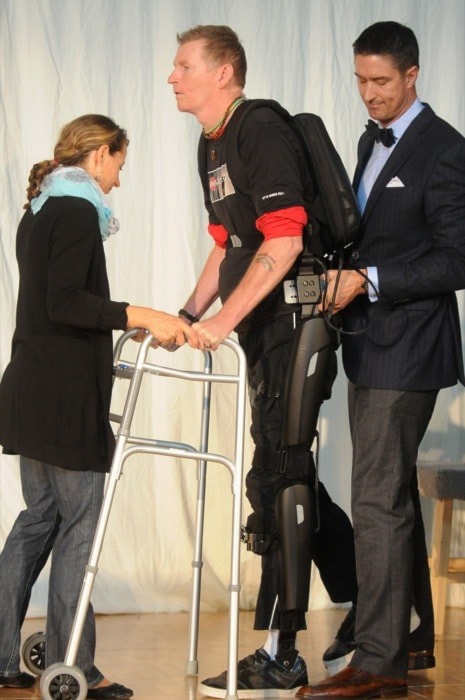Better care for the nation's veterans, soldiers and seniors is coming to Surrey, as plans for a new state-of-the-art "Legion Veterans Village" were unveiled last week for City Centre.
The 20-storey, multi-use facility will be built on the existing Whalley Legion property at 13525 106 Ave. and will include assisted living units, family space, community gardens and a therapeutic centre of excellence that will have a research component.
“The Legion Veterans Village will ensure the Royal Canadian Legion continues to provide vital services for Canadian Veterans,” said Inga Kruse, executive director, B.C. and Yukon command and foundation. “Veterans are often perceived as older,” she said, “but there is a need for services for those who’ve served in recent conflicts and our members wanted to help in any way they could.”
The building is being designed by Michael Greene Architecture and will feature a set of twin towers that is reminiscent of the Canadian National Vimy Memorial in France. The outside of the towers will feature a red poppy design that has the blooms dissipate as they reach the sky.
The concept for the village was conceived in partnership with the Royal Canadian Legion, the City of Surrey’s Innovation Boulevard and the Institute for Healthcare Innovations on Innovation Boulevard.
On hand during the announcement at SFU Surrey was Canadian soldier Capt. Trevor Greene, who in 2006 was the victim of a vicious axe attack while serving with the Canadian military in Afganistan that resulted in his brain being nearly severed in two.
Despite surviving the attack, Greene was told he would never walk again. However during Thursday’s announcement, he took his first public steps with the aid of a customized high-tech exoskeleton – a collaborative scientific breakthrough that has become known as Project Iron Soldier.
In 2009, SFU neuroscientist, professor and Innovation Boulevard co-chair Dr. Ryan D’Arcy partnered with Greene in a research project to explore the brain’s ability reorganize neural pathways in response to different behaviours, thoughts or emotions.
While working with Greene, D’arcy and his team discovered that physical functions can be recovered through rehabilitation even six years after an injury.
In 2014, SFU mechatronics engineer Carolyn Sparrey was given the task of customizing an exoskeleton for Greene.
Although exoskeletons are most often used for patients with spinal injuries, this was the first time this technology had been used for someone with a brain injury.
With assistance, Greene is now able to walk upright with his custom made exoskeleton designed by ReWalk, a company based in Israel.
Greene credits the strength and determination of his wife Deborah, along with the Innovation Boulevard researchers and partners, for his continued improvement.
“This is is an example of the kind of work we are doing here – work that will have an immediate impact on improving health outcomes for our most vulnerable and important members of society," said Rowena Rizzotti, chief executive of the Institute for Healthcare Innovations at Innovation Boulevard. “Trevor’s exoskeleton and the Legion Veterans Village both have long-term global implications for the lives of millions through improvements in care and services for veterans and aging Canadians.”
As for Greene, he says his future is looking up – way up. His goal is to someday walk unassisted to Mount Everest's base camp.
